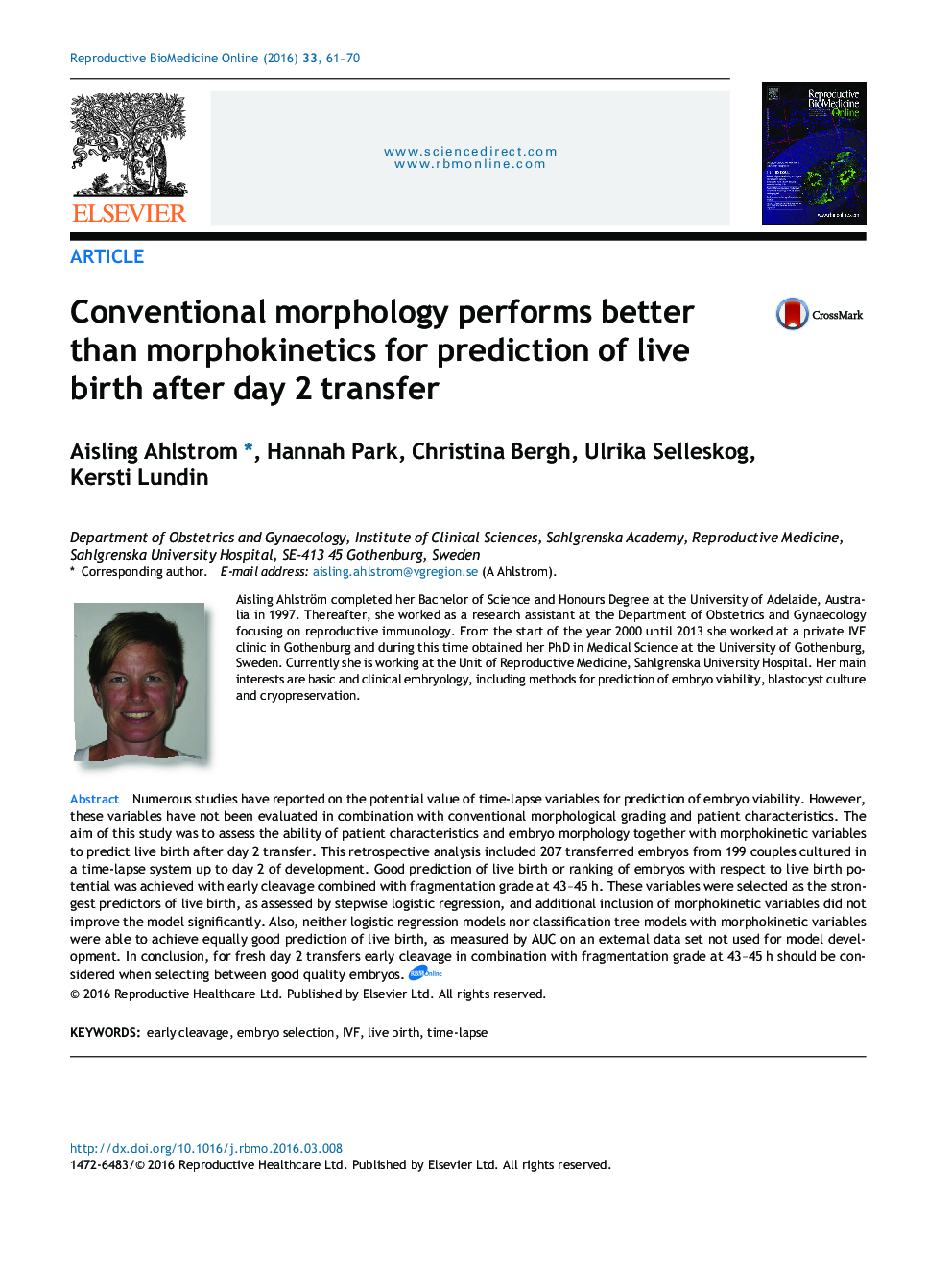| Article ID | Journal | Published Year | Pages | File Type |
|---|---|---|---|---|
| 3969968 | Reproductive BioMedicine Online | 2016 | 10 Pages |
Numerous studies have reported on the potential value of time-lapse variables for prediction of embryo viability. However, these variables have not been evaluated in combination with conventional morphological grading and patient characteristics. The aim of this study was to assess the ability of patient characteristics and embryo morphology together with morphokinetic variables to predict live birth after day 2 transfer. This retrospective analysis included 207 transferred embryos from 199 couples cultured in a time-lapse system up to day 2 of development. Good prediction of live birth or ranking of embryos with respect to live birth potential was achieved with early cleavage combined with fragmentation grade at 43–45 h. These variables were selected as the strongest predictors of live birth, as assessed by stepwise logistic regression, and additional inclusion of morphokinetic variables did not improve the model significantly. Also, neither logistic regression models nor classification tree models with morphokinetic variables were able to achieve equally good prediction of live birth, as measured by AUC on an external data set not used for model development. In conclusion, for fresh day 2 transfers early cleavage in combination with fragmentation grade at 43–45 h should be considered when selecting between good quality embryos.
